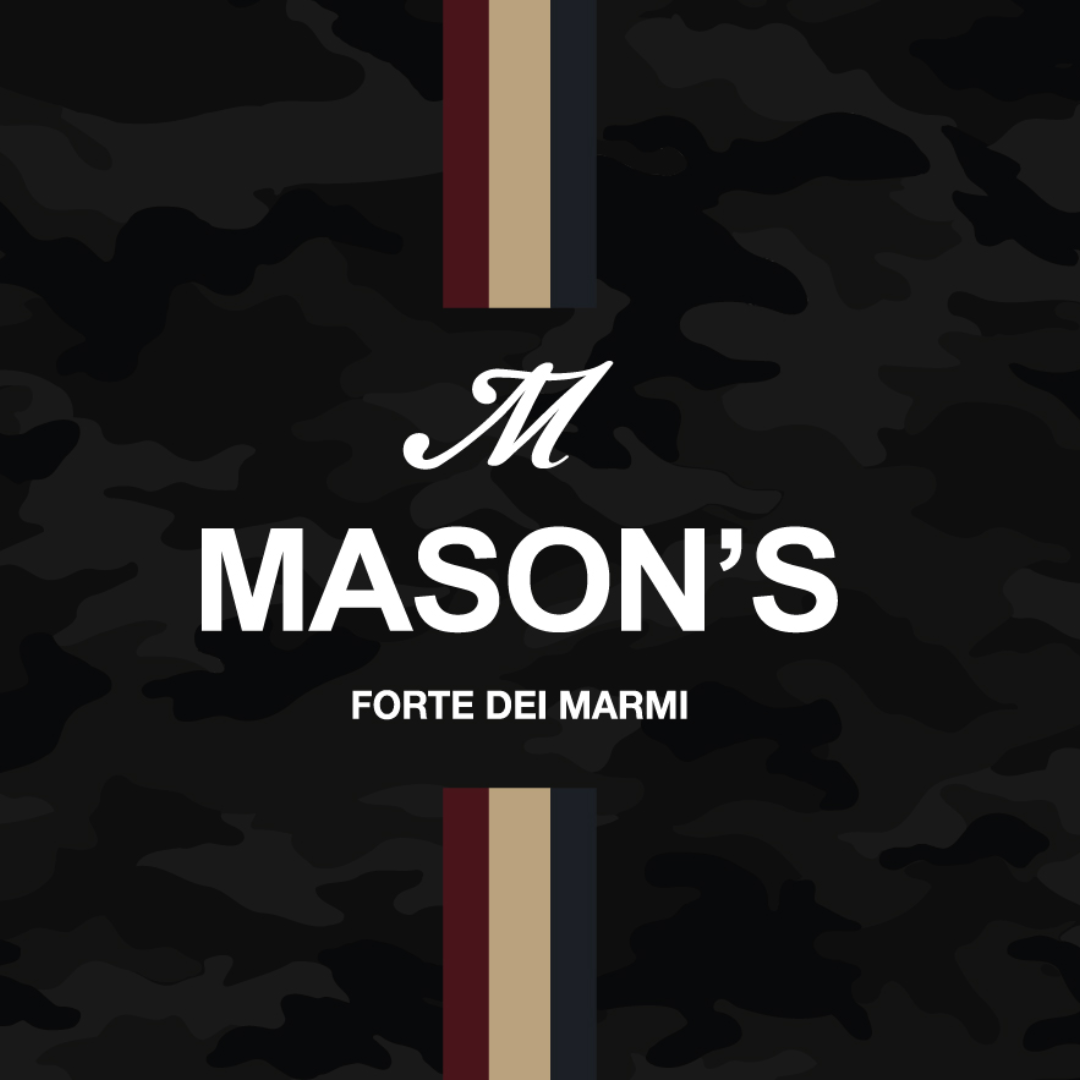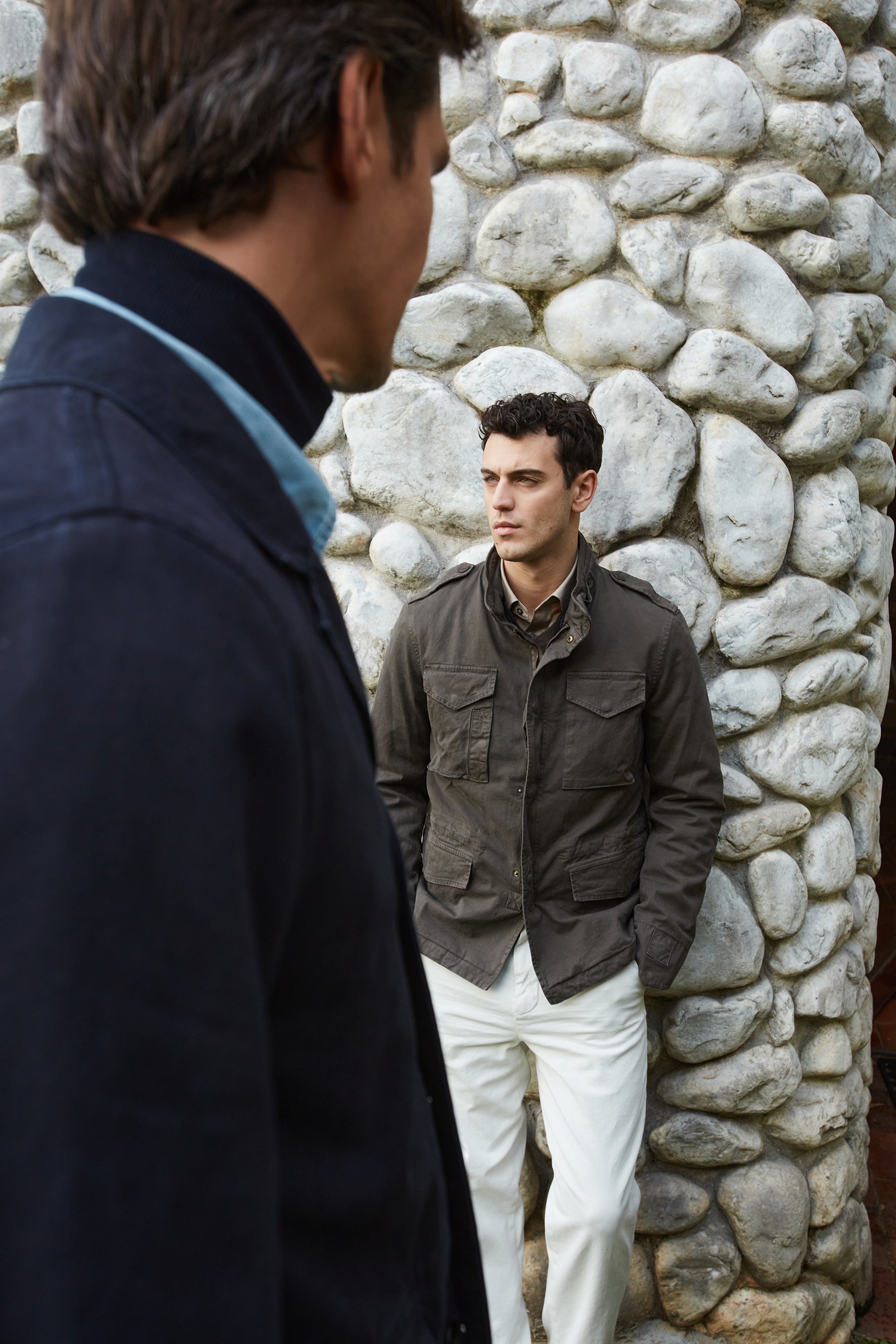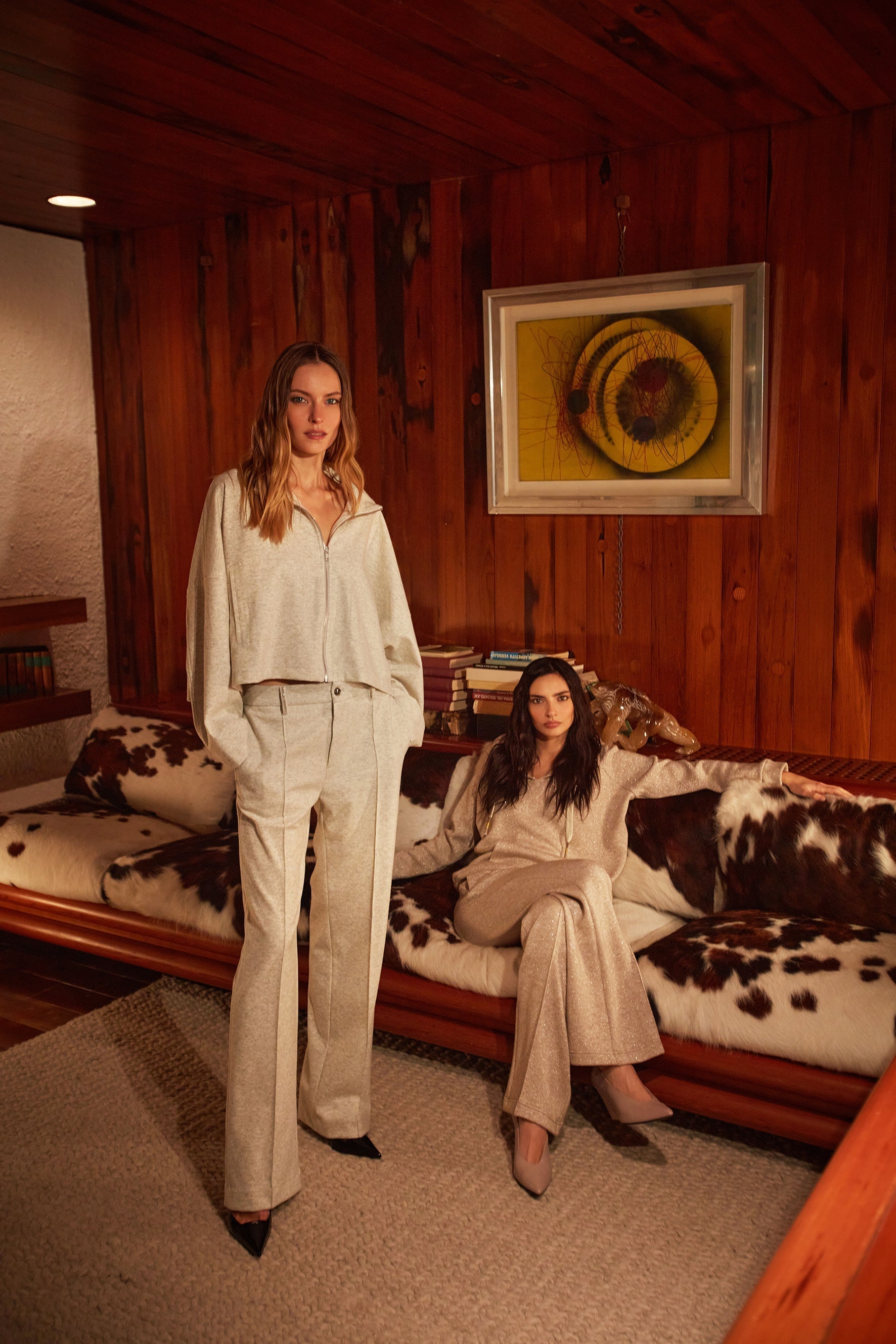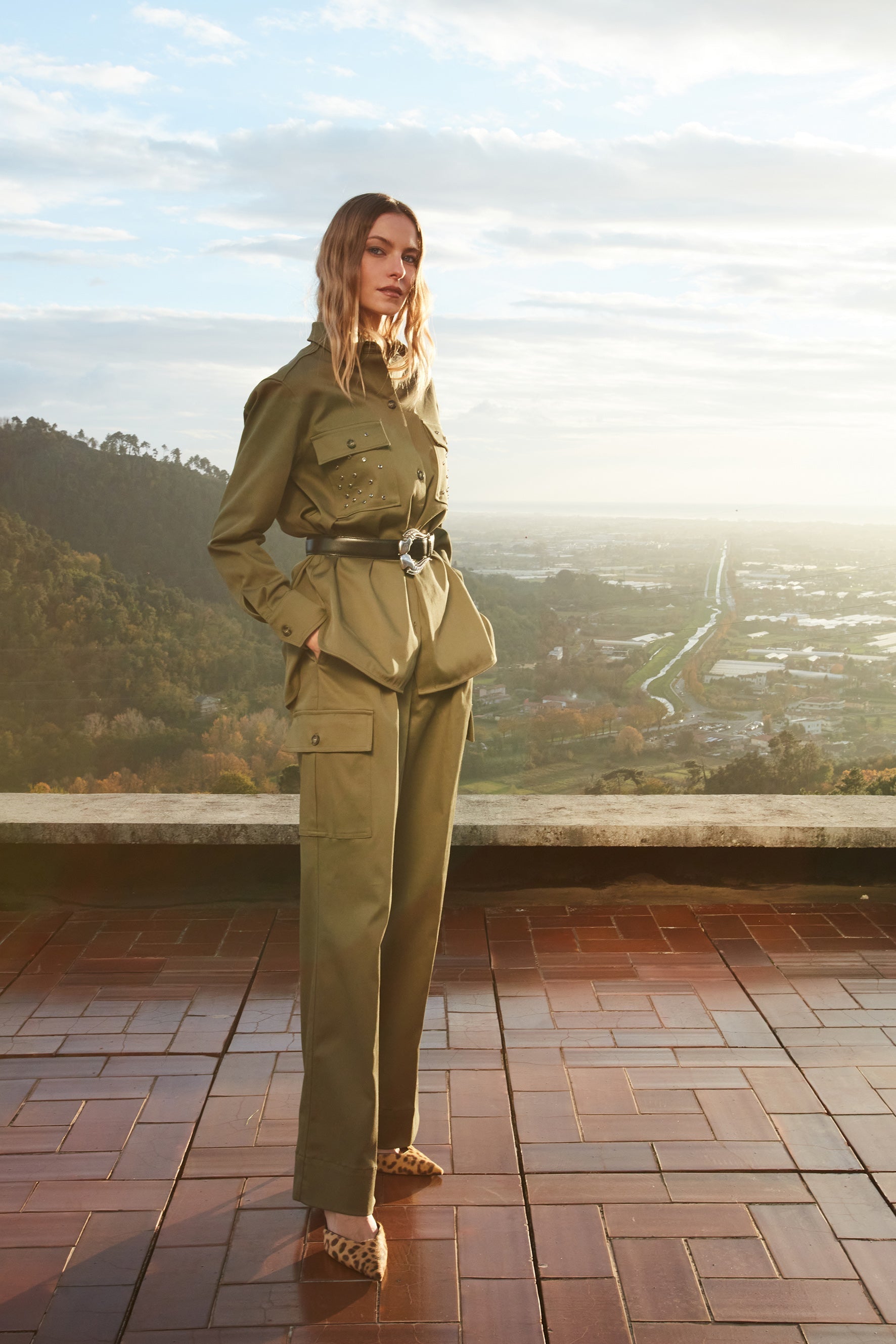Mason’s and the Camouflage

Camouflage was not born in fashion. It was born in the field — a grammar of survival turned into an aesthetic language. At Mason’s, that language becomes identity. No longer camouflage to hide, but a sign to stand out.
From the first jackets found in South America in the 1970s — garments of the Colombian Liberation Army — came the vision that still defines the brand: translating military functionality into contemporary style.
The camouflage pattern, a symbol of freedom and resilience, runs through Mason’s men’s and women’s collections. It connects past and present. On pants, bermudas, shirts, and field jackets, it preserves its original soul while evolving its message — from military code to personal expression of character and authenticity.
Origins and Meaning of Camouflage in Mason’s DNA
The military aesthetic is not an inspiration — it’s the origin. In the 1970s, a group of garments recovered in South America — jackets and trousers from the Colombian Liberation Army — contained a principle that would become the brand’s signature: transforming function into aesthetics, discipline into freedom.
Since then, camouflage has ceased to be just a pattern. It has become a language. A sign that crosses Mason’s men’s and women’s collections, preserving its narrative strength.
In the winter collection, it returns with the M74 Work Jacket, a direct descendant of the military field jacket. Made of stretch cotton satin, it retains the original structure: large flap pockets, front zip reinforced with buttons, and an internal drawstring to adjust the fit. The camouflage print, reinterpreted with a contemporary attitude, does not conceal — it enhances. An aesthetic code that speaks of freedom and identity.

In the summer collection, the same language finds a lighter voice in the Judy bermuda, a women’s cargo short in 100% cotton twill. Relaxed fit, camo pattern in sand and sage tones. Details: cargo pockets, welt back pockets, and the signature “M” rivet. The essential construction enhances a practical, modern femininity.

Two garments, two seasons, one message: Mason’s camouflage is not made to blend in — it’s made to stand out.
An Identity Code
The Mason’s camouflage is not nostalgia. It’s continuity. Military memory meets the brand’s contemporary vision. The symbol of concealment becomes a mark of recognition.
In Mason’s wardrobe, camouflage is a visual grammar. It adapts to materials, shifts across seasons and genders, yet keeps its same intensity. It reflects a precise idea: true elegance is born from function. Every authentic sign can become style.
Mason’s camouflage goes beyond clothing: the Camou collection. The Black Camou, Green Camou, and White Camou bottles reinterpret the iconic camouflage pattern, transforming it into an olfactory language.
Green Camou: a unisex essence with notes of incense, patchouli, and Nepal amber. Energy and freedom.
Black Camou: the original fragrance. Balances fresh and warm notes — the dual soul of Mason’s: masculine and feminine, classic and contemporary.
White Camou: the most iconic fragrance. A floral breath of iris, rose, and cedarwood — the luminous strength of Mason’s femininity.
Mason’s camouflage is not a graphic motif. It’s an identity code. A pattern that crosses fashion and fragrance. Same grammar, different languages. Not to hide — to stand out.
FAQ – Mason’s Camouflage
1) What does the camouflage pattern mean in fashion?
Originally designed for military camouflage, the pattern in fashion has taken on the opposite value: to stand out, not to hide. At Mason’s, it becomes an identity code — an aesthetic signature that unites military heritage with a modern vision of freedom and style.
2) How should a camouflage piece be styled?
Balance is key. A camouflage piece pairs best with neutral fabrics like gabardine, denim, and corduroy. In Mason’s collections, the camouflage pattern coexists with tailored lines and fine materials, becoming a sophisticated accent that adds character without excess.
3) Why is camouflage so important to Mason’s?
Because it’s part of Mason’s story. From South American military jackets to contemporary design, it represents freedom, authenticity, and resilience. Not a graphic motif — a symbol that tells the brand’s origins and identity.






